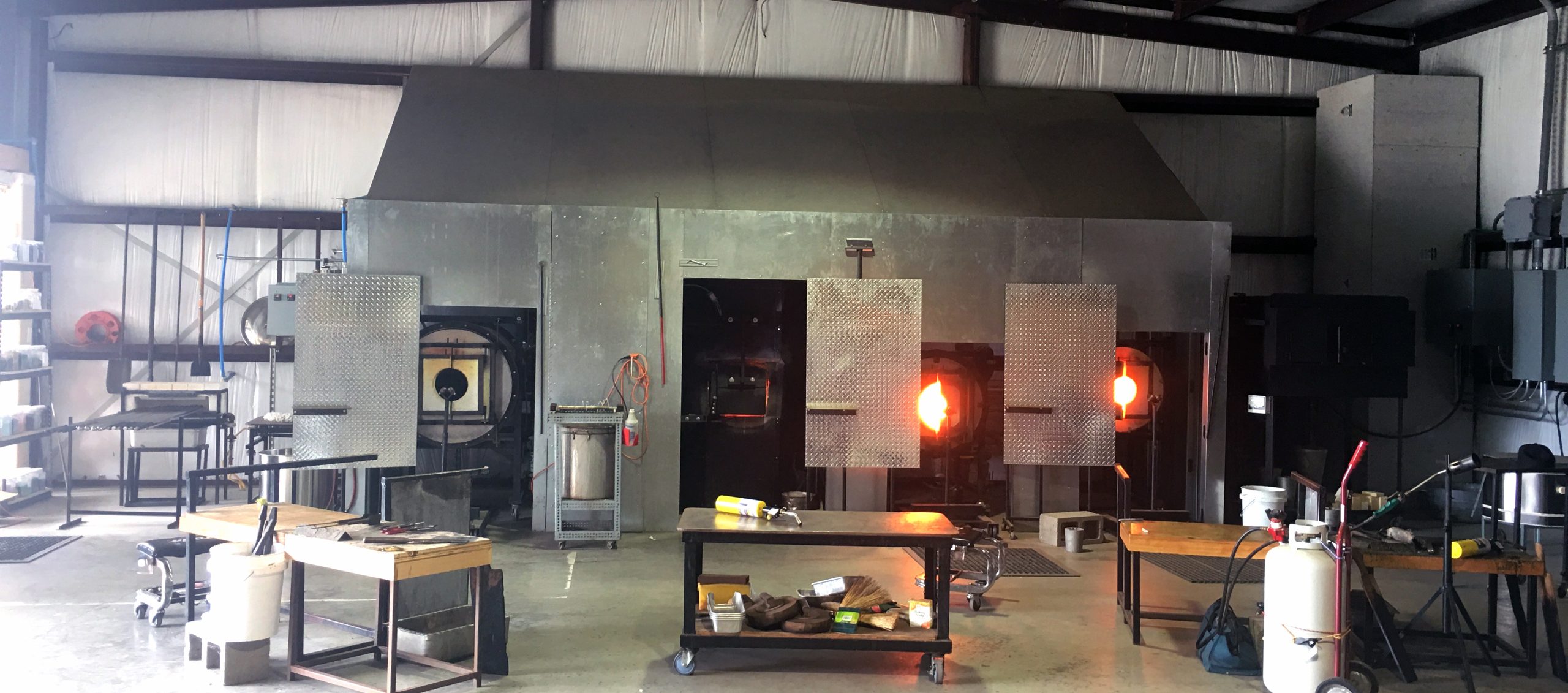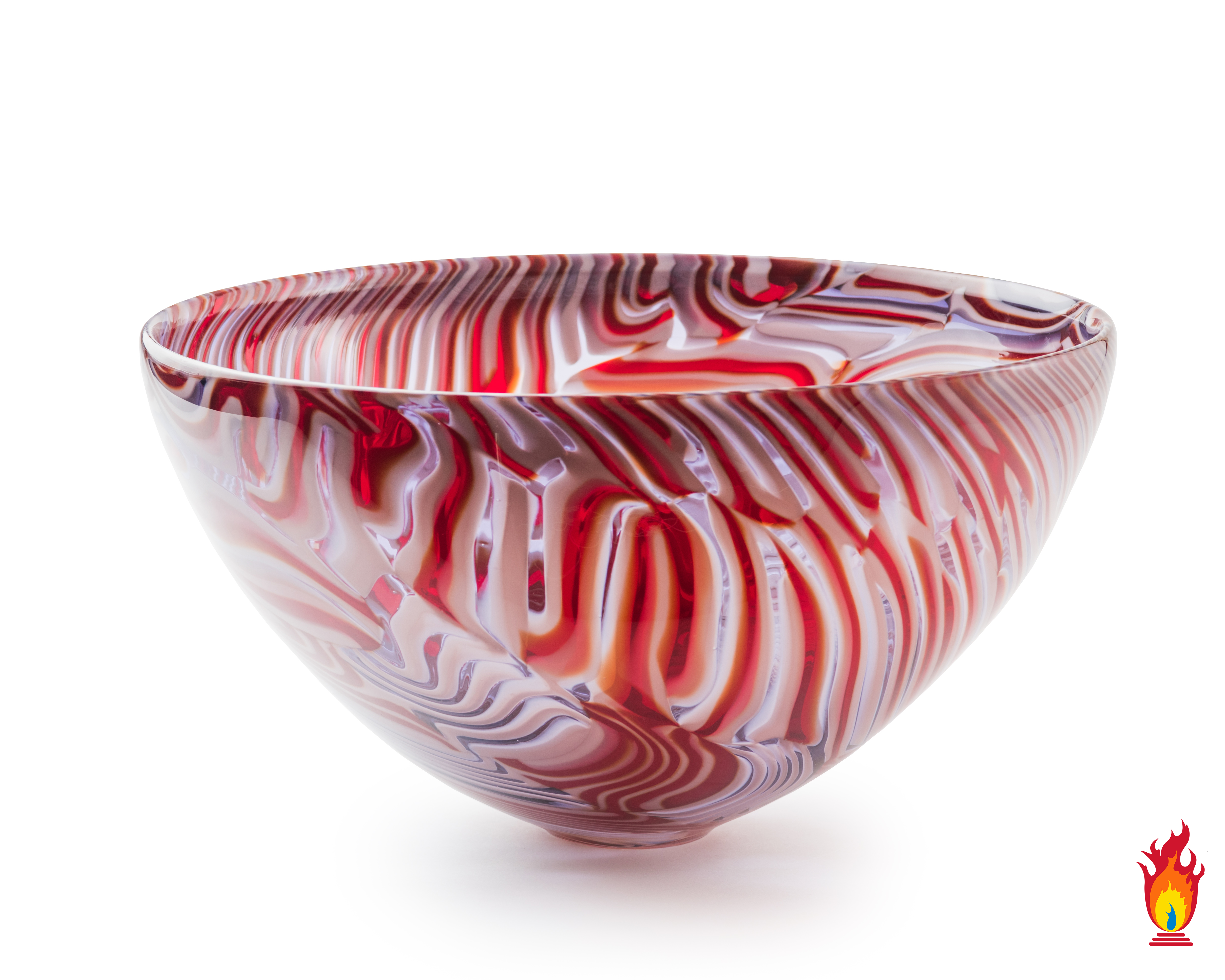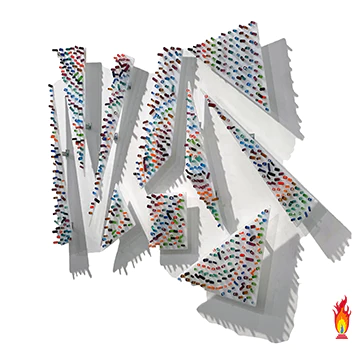Glass is such a wonderful material to work with to make art. There is nothing else like it! You can create glass art by blowing, kiln casting, fusing, slumping pate-de-Verre, flame-working, hot sculpting, and cold-working. In doing that, you can change how it looks, the colors, patterns, textures, and reflective properties. Let me explain, on a high level, what that really means. There are three main categories of glass art called cold, warm (kiln-formed), and hot glass. Every piece of glass art made falls into one of these three categories.
Cold Glass
Cold glass techniques include cutting, grinding, polishing, engraving, sandblasting, and etching. Etching can involve applying acid or blasting abrasive material on the surface of the glass to change its texture and appearance.
Cold working glass techniques involve no real heat. A cold glass artist might construct sculptural pieces by laminating (with high technology glues) or soldering multiple pieces of glass together.
The glass shapes can then be changed by cutting, grinding, and polishing using cold working machinery made for just this purpose. Some of this work can be done by hand, but typically it is more effective to use cold working machineries such as diamond saws, flat lap wheels, vertical belt sanders, engravers, and lathes.
Stain glass is made by taking mostly sheet glass, cutting it (perhaps also grinding and polishing it) into the appropriate shape for your pattern, and then joining it with soldering techniques. All of these cold glass techniques are done at room temperature.
Warm Glass
Warm glass (Kiln-Forming) techniques include fusing, slumping, kiln-casting, and pate-de-Verre.
Fusing is about taking two or more pieces of glass and heating them until they join together, making a single piece. Slumping involves manipulating the shape of the glass to take on the shape of the object on which it sits. Kiln-casting creates a glass form by heating glass vertically flowing into the void of a refractory mold located below the flow. Pate-de-Verre is a kiln-casting method that uses glass granules (frit), makes them into a paste using a binder, and then applies it to a mold’s inner surface.
Kiln-Forming techniques require a kiln; these come at various sizes and prices depending on the artist’s needs.




